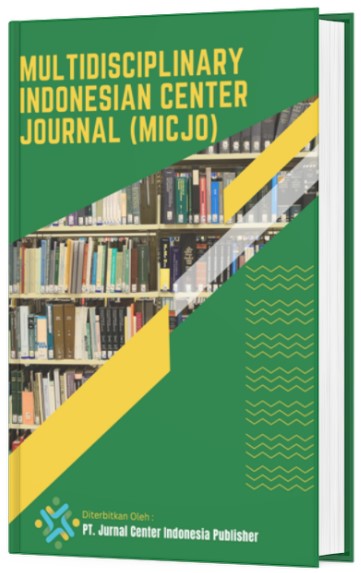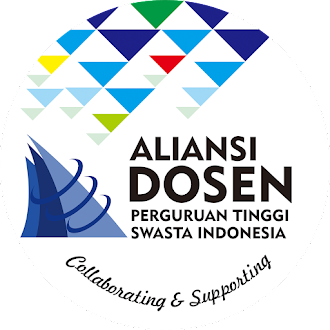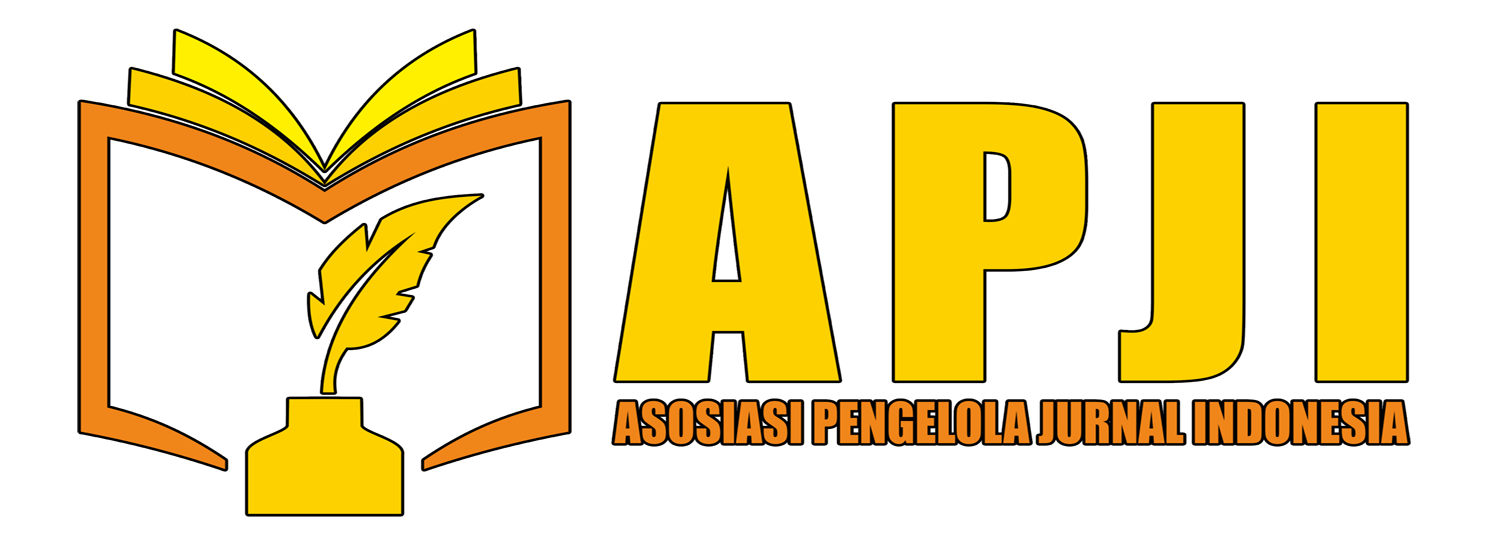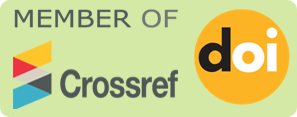INTEGRATING SHARIA VALUES AND MEDICAL STANDARDS IN SAFE AND ETHICAL SUNNAH CUPPING PRACTICES
DOI:
https://doi.org/10.62567/micjo.v2i3.788Keywords:
clinical safety in sunnah cupping, emergency preparedness in sunnah cupping, Islamic ethics in sunnah cupping, medical SOP for sunnah cupping, therapist training in sunnah cuppingAbstract
Sunnah cupping therapy (hijamah) is a form of prophetic medicine that combines spiritual and therapeutic dimensions but often lacks adherence to clinical safety standards. This study aims to analyze the urgency of integrating Sharia values—particularly maqashid shariah (protection of life) and la dharara wa la dhirar—with emergency medical protocols in sunnah cupping practice. The research uses a normative-qualitative literature review method. Data were collected from recent academic sources and analyzed through content analysis to develop an ethical and procedural framework. Findings reveal that sunnah cupping carries clinical risks such as infection, bleeding, and vasovagal shock when performed without medical protocols. The integration of Sharia and medical principles is operationalized through emergency training, Islamic-based SOPs, and education-regulation mechanisms rooted in maqashid. Core Islamic ethics—such as ikhlas (intention), amanah (trust), and tathir al-adawat (sterilization)—are essential moral pillars within the clinical service model. This study concludes that the integration of Sharia values with emergency medical preparedness is a critical need in the practice of sunnah cupping. The study recommends the development of standardized curricula, clinic certification, and first aid (CPR) training for therapists to ensure safety, professionalism, and religious legitimacy.
Downloads
References
Aboushanab, T. and Alsanad, S. (2018). Cupping therapy: an overview from a modern medicine perspective. Journal of Acupuncture and Meridian Studies, 11(3), 83-87. https://doi.org/10.1016/j.jams.2018.02.001
Akmalludin, M., Hoque, M., Nor, Z., & Ismail, M. (2023). The dimensions of prophetic medication. International Journal of Academic Research in Business and Social Sciences, 13(11). https://doi.org/10.6007/ijarbss/v13-i11/19370
Al-Qahtani, S. and Alsulami, B. (2023). Prevalence and predictors of use of cupping among patients attending a primary care center in riyadh, saudi arabia. Journal of Family Medicine and Primary Care, 12(2), 376-382. https://doi.org/10.4103/jfmpc.jfmpc_1615_22
AlBedah, A., Elsubai, I., Qureshi, N., Aboushanab, T., Ali, G., El-Olemy, A., … & Alqaed, M. (2019). The medical perspective of cupping therapy: effects and mechanisms of action. Journal of Traditional and Complementary Medicine, 9(2), 90-97. https://doi.org/10.1016/j.jtcme.2018.03.003
Alhizbi, M. N. (2019). Maslahah munfaridah sebagai justifikasi dalam pengamalan hukum islam. Asy-Syari'ah, 19(1), 69-90. https://doi.org/10.15575/as.v19i1.3518
Alipour, R., Jamalimoghadamsiahkali, S., Karimi, M., Asadi, A., Ghaem, H., Adel-Mehraban, M., … & Kazemi, A. (2022). Acupuncture or cupping plus standard care versus standard care in moderate to severe covid-19 patients: an assessor-blinded, randomized, controlled trial. Integrative Medicine Research, 11(4), 100898. https://doi.org/10.1016/j.imr.2022.100898
Almaiman, A. (2018). Proteomic effects of wet cupping (al-hijamah). Saudi Medical Journal, 39(1), 10-16. https://doi.org/10.15537/smj.2018.1.21212
Alshammari, K. (2021). Assessment of knowledge, attitude, and practice about first aid among male school teachers in hail city. Journal of Family Medicine and Primary Care, 10(1), 138-142. https://doi.org/10.4103/jfmpc.jfmpc_1322_20
Amiruddin, M., Syafitri, L., Rabbani, A., Muthmainnah, A., & Salsabila, A. (2022). The benefits of removing dirty blood with traditional cupping treatment. planar, 2, 60. https://doi.org/10.18860/planar.v2i0.2127
Astiwara, E. (2024). Integration of sharia principles in islamic hospital management: opportunities and obstacles. International Journal of Science and Society, 6(4), 484-500. https://doi.org/10.54783/ijsoc.v6i4.1413
Blewer, A., Ibrahim, S., Leary, M., Dutwin, D., McNally, B., Anderson, M., … & Abella, B. (2017). Cardiopulmonary resuscitation training disparities in the united states. Journal of the American Heart Association, 6(5). https://doi.org/10.1161/jaha.117.006124
Can, D. and Bayer, N. (2023). Determining the mothers’ first-aid self-efficacy in-home accidents in turkey. European Journal of Environment and Public Health, 7(3), em0141. https://doi.org/10.29333/ejeph/13376
Chamsi‐Pasha, H., Chamsi-Pasha, M., & Albar, M. (2016). Teaching islamic medical ethics. Mededpublish, 5, 145. https://doi.org/10.15694/mep.2016.000145
Choi, T., Ang, L., Ku, B., Jun, J., & Lee, M. (2021). Evidence map of cupping therapy. Journal of Clinical Medicine, 10(8), 1750. https://doi.org/10.3390/jcm10081750
Dahlan, M., Bustami, M., Makmur, M., & Mas'ulah, S. (2021). The islamic principle of ḥifẓ al-nafs (protection of life) and covid-19 in indonesia: a case study of nurul iman mosque of bengkulu city. Heliyon, 7(7), e07541. https://doi.org/10.1016/j.heliyon.2021.e07541
El-Olemy, A., Al-Bedah, A., Almosilhi, A., Almusailhi, J., Hussein, A., Khalil, M., … & Qureshi, N. (2017). Cupping therapy (al-hijamah): an exploratory study of healthcare professionals controversial beliefs and conceptions, kingdom of saudi arabia. Journal of Complementary and Alternative Medical Research, 3(2), 1-11. https://doi.org/10.9734/jocamr/2017/34835
Ghazy, E., Muhayawi, S., Mourad, S., & Alahdal, R. (2018). Comparison of safety and efficacy of al-hijama (cupping) and conventional medical therapy for sinusitis (i). Journal of King Abdulaziz University-Medical Sciences, 25(2), 11-26. https://doi.org/10.4197/med.25-2.2
Gunawan, G. and Lestari, A. (2021). Al-ghazali's thoughts on education and its relevance to islamic education in the millennial era. AJIS: Academic Journal of Islamic Studies, 6(1), 103-116. https://doi.org/10.29240/ajis.v6i1.2091
Guo, L., Wang, L., Wang, Z., Wei, L., Ding, L., Kong, Y., … & Sun, L. (2021). Evaluation of the effectiveness and safety of cupping therapy in the treatment of asthma. Medicine, 100(41), e27518. https://doi.org/10.1097/md.0000000000027518
Hammad, H., Subri, I., & Khafidz, H. (2023). The impact of religiosity on the malaysian muslim community’s attitude towards the practice of cupping. Juris (Jurnal Ilmiah Syariah), 22(1), 145. https://doi.org/10.31958/juris.v22i1.8461
Harun, S., Ahmad, I., Shafie, S., Choirisa, S., & Rizkalla, N. (2024). Developing muslim-friendly hospital practices: understanding the key drivers. Journal of Islamic Marketing, 15(11), 3137-3155. https://doi.org/10.1108/jima-03-2023-0094
Hong, F. (2021). The importance of general practitioners in emergency and pre-hospital first aid. Frontiers in Medical Science Research, 3(6). https://doi.org/10.25236/fmsr.2021.030616
Hussein, A., Albar, M., & Alsanad, S. (2019). Prophetic medicine, islamic medicine, traditional arabic and islamic medicine (taim): revisiting concepts and definitions. Acta Scientific Medical Sciences, 3(8), 62-69. https://doi.org/10.31080/asms.2019.03.0347
Komaruddin, K., Sarib, S., Mokodenseho, S., Mokodompit, N., & Manangin, T. (2024). Public understanding of the implementation of islamic law in the context of modern life in indonesia. Sanskara Hukum Dan Ham, 2(03), 153-160. https://doi.org/10.58812/shh.v2i03.378
Lu, M., Yang, C., Tsai, S., Hung, C., & Chen, S. (2020). Intraperitoneal hemorrhage after cupping therapy. Hong Kong Journal of Emergency Medicine, 27(2), 107-109. https://doi.org/10.1177/1024907918784076
Machfudloh, M., Jannah, M., & Astuti, Y. (2022). Assistance for post-natal cupping massage according to the sunnah of the prophet. Community Empowerment, 7(6), 1061-1066. https://doi.org/10.31603/ce.5996
McClung, C. and Anshus, A. (2015). Interposed abdominal compression cpr for an out-ofhospital cardiac arrest victim failing traditional cpr. Western Journal of Emergency Medicine, 16(5), 690-692. https://doi.org/10.5811/westjem.2015.6.26082
Mehta, P. and Dhapte, V. (2015). Cupping therapy: a prudent remedy for a plethora of medical ailments. Journal of Traditional and Complementary Medicine, 5(3), 127-134. https://doi.org/10.1016/j.jtcme.2014.11.036
Mohamed, A., Zhang, X., & Jan, Y. (2023). Evidence-based and adverse-effects analyses of cupping therapy in musculoskeletal and sports rehabilitation: a systematic and evidence-based review. Journal of Back and Musculoskeletal Rehabilitation, 36(1), 3-19. https://doi.org/10.3233/bmr-210242
Mohammadi, S., Roostayi, M., Naimi, S., & Baghban, A. (2019). The effects of cupping therapy as a new approach in the physiotherapeutic management of carpal tunnel syndrome. Physiotherapy Research International, 24(3). https://doi.org/10.1002/pri.1770
Mohandes, B., Bayoumi, F., AllahDiwaya, A., Falah, M., Alhamd, L., Alsawadi, R., … & Jihwaprani, M. (2024). Cupping therapy for the treatment of migraine headache: a systematic review and meta-analysis of clinical trials. Journal of Pharmacopuncture, 27(3), 177-189. https://doi.org/10.3831/kpi.2024.27.3.177
Mokodenseho, S., Siregar, R., Muslim, S., Hasibuan, K., & Rahman, R. (2024). Analysis of the influence of fiqh and maqasid al-syariah in the formation of islamic legal policy in indonesia. WSiSS, 2(01), 30-37. https://doi.org/10.58812/wsiss.v2i01.590
Muhammad, R., Annuar, H., Taufik, M., & Nugraheni, P. (2021). The influence of the ssb’s characteristics toward sharia compliance of islamic banks. Cogent Business & Management, 8(1). https://doi.org/10.1080/23311975.2021.1929033
Muhammedi, S., Cheumar, M., & Haji-Othman, Y. (2023). Conceptual analysis of shariah advisory board in the corporate governance of islamic financial institutions in minority muslim country: the case of uganda. International Journal of Academic Research in Business and Social Sciences, 13(10). https://doi.org/10.6007/ijarbss/v13-i10/19161
Muhsin, S. (2021). Medical confidentiality ethics: the genesis of an islamic juristic perspective. Journal of Religion and Health, 61(4), 3219-3232. https://doi.org/10.1007/s10943-021-01313-7
Nisar, M. (2018). Cupping (hijama) treatment: benign or sinister?. Journal of Patient Safety, 14(1), e1-e2. https://doi.org/10.1097/pts.0000000000000162
Reveruzzi, B., Buckley, L., & Sheehan, M. (2016). School‐based first aid training programs: a systematic review. Journal of School Health, 86(4), 266-272. https://doi.org/10.1111/josh.12373
Rimiyati, H. and Susanto, S. (2021). Sharia hospital management in terms of religion surveillance aspect in yogyakarta.. https://doi.org/10.2991/aer.k.210121.038
Saleh, M., Mehellou, A., & Omar, B. (2023). Maqāṣid al-sharī’ah as goal framing for sustainable behaviours: a conceptual framework. Intellectual Discourse, 31(1). https://doi.org/10.31436/id.v31i1.1805
Sutriyono, S., Robbina, M., & Ndii, M. (2019). The effects of wet cupping therapy in blood pressure, glucose, uric acid and total cholesterol levels. Biology Medicine & Natural Product Chemistry, 8(2), 33-36. https://doi.org/10.14421/biomedich.2019.82.33-36
Tamrin, K. (2021). Premarital check up dalam perspektif maqashid al-syari’ah. Al-Manhaj Jurnal Hukum Dan Pranata Sosial Islam, 3(1), 89-114. https://doi.org/10.37680/almanhaj.v3i1.435
Vajdic, C., Perez‐Concha, O., Dobbins, T., Ward, R., Schaffer, A., Leeuwen, M., … & Pearson, S. (2019). Demographic, social and lifestyle risk factors for cancer registry-notified cancer of unknown primary site (cup). Cancer Epidemiology, 60, 156-161. https://doi.org/10.1016/j.canep.2019.04.004
Vermonden, M., Dehaerne, L., Toelen, J., & Coninck, D. (2023). Teacher preparedness for medical emergencies in belgian classrooms: studying objective and subjective first-aid knowledge. Children, 10(4), 669. https://doi.org/10.3390/children10040669
Wahyuni, S., Pujiharto, P., & Hartikasari, A. (2020). Sharia maqashid index and its effect on the value of the firm of islamic commercial bank in indonesia. Riset Akuntansi Dan Keuangan Indonesia, 36-45. https://doi.org/10.23917/reaksi.v5i1.9493
Windasari, N., Azhari, N., & Putra, I. (2023). Assessing consumer preferences on halal service: the emergence of sharia hospitals for muslim consumer. Journal of Islamic Marketing, 15(1), 22-41. https://doi.org/10.1108/jima-07-2022-0192
Xiang, T., Zhang, X., Wei, Y., Feng, D., Gong, Z., Liu, X., … & Jiang, R. (2022). Possible mechanism and atorvastatin-based treatment in cupping therapy-related subdural hematoma: a case report and literature review. Frontiers in Neurology, 13. https://doi.org/10.3389/fneur.2022.900145
Zahrin, S., Said, M., Sandakumaran, A., & Khan, A. (2021). The benefit of cupping (hijamah) to post-vaccination mental & physical health. Journal of Katha, 17(1), 20-31. https://doi.org/10.22452/katha.vol17no1.2
Downloads
Published
How to Cite
Issue
Section
License
Copyright (c) 2025 Andik Isdianto, Novariza Fitrianti, Abdul Hamid Arif, Wahyudi Widada

This work is licensed under a Creative Commons Attribution-ShareAlike 4.0 International License.


















